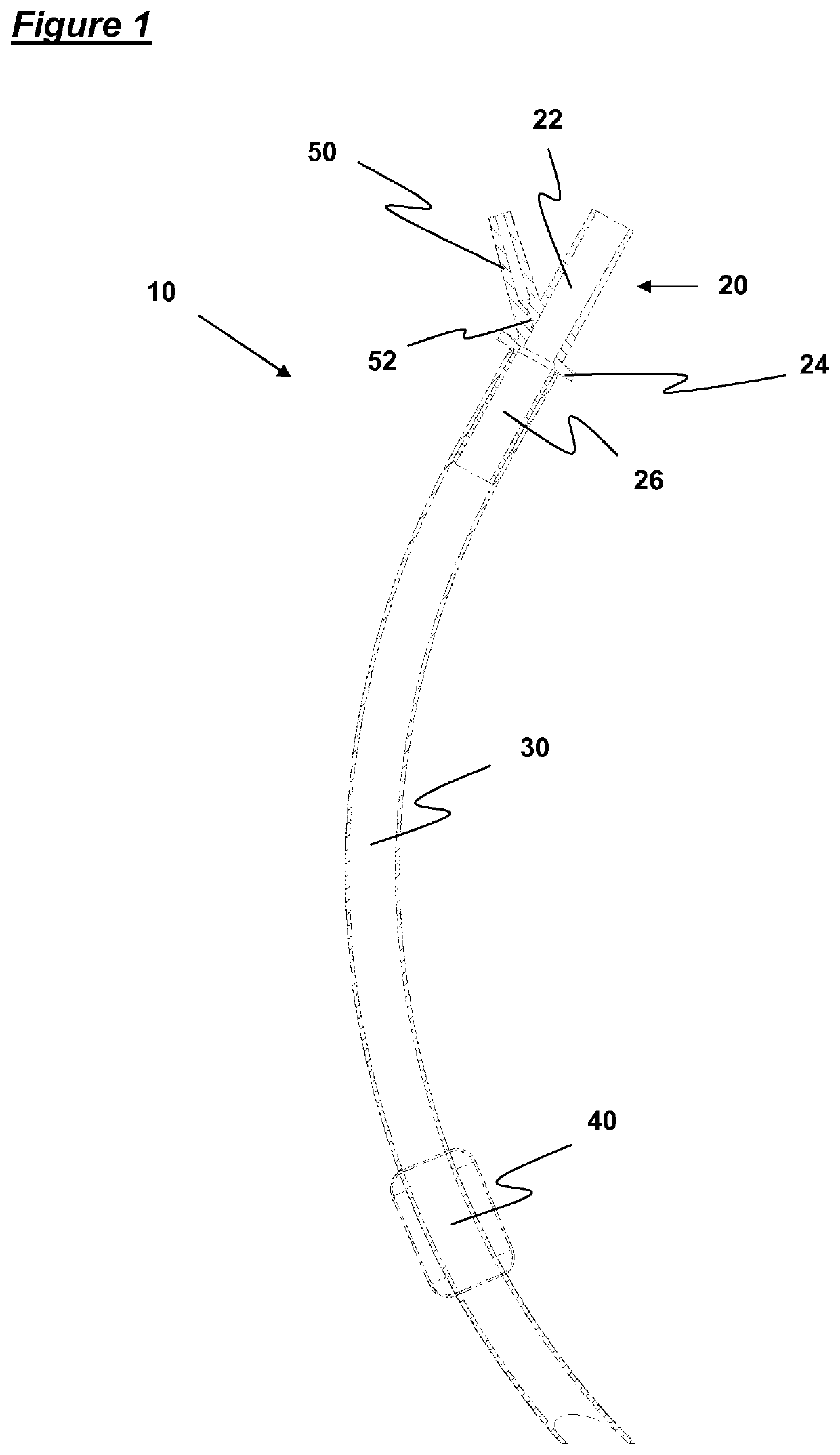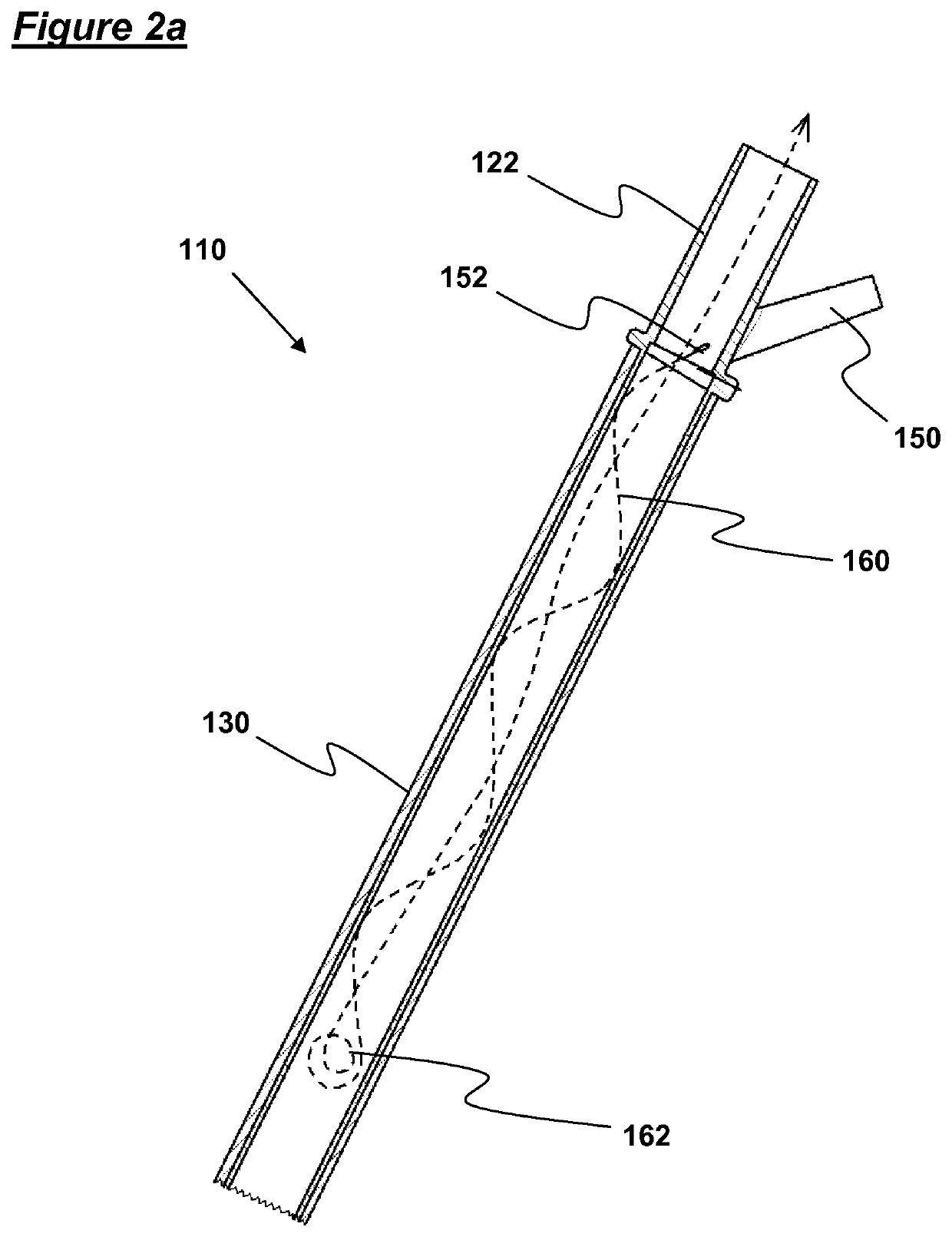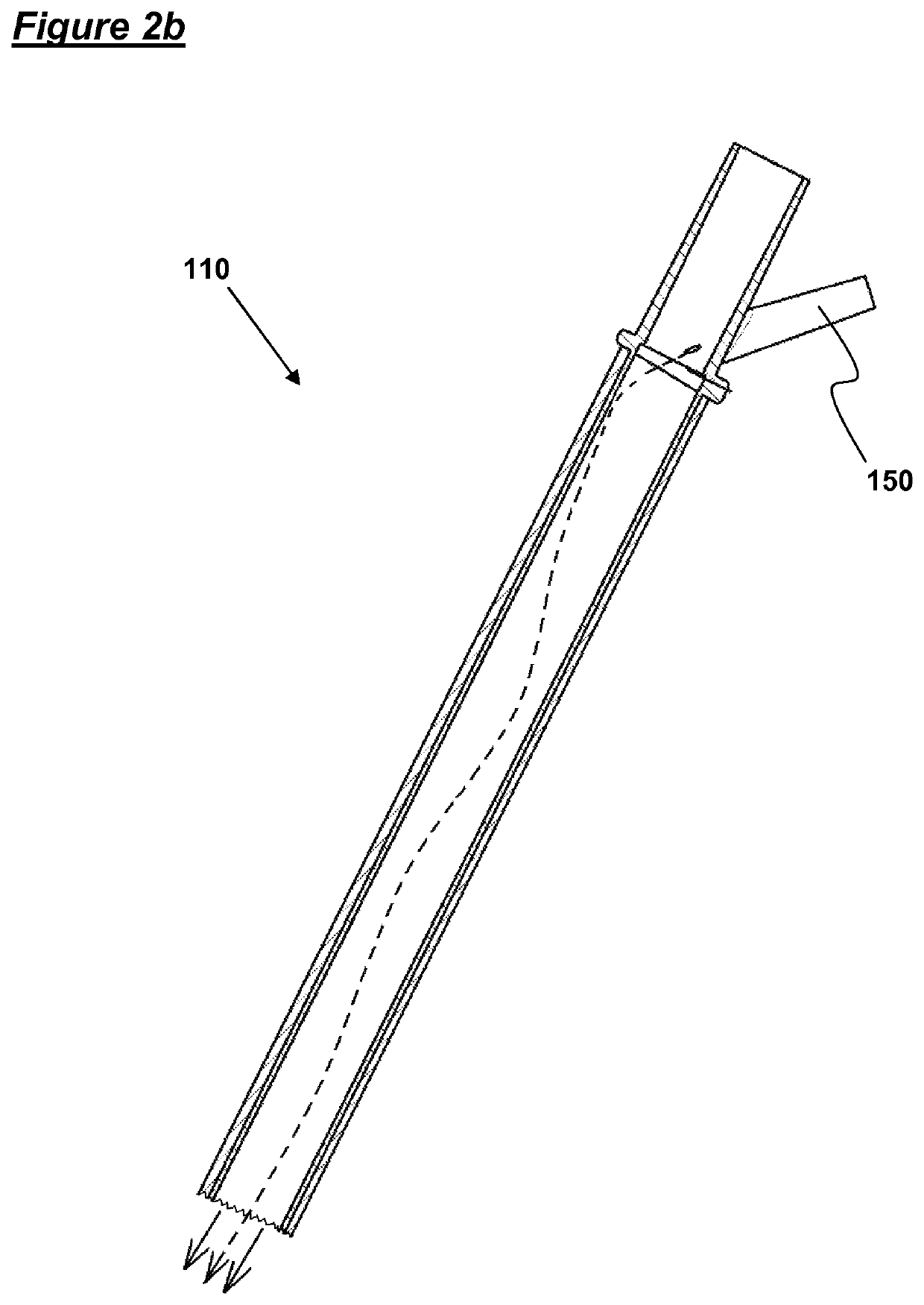Respiratory apparatus
a technology of respiratory apparatus and stent, which is applied in the direction of life-saving devices, medical devices, other medical devices, etc., can solve the problems of inability to completely satisfy the solution, inhalation of gases within the remainder of the device, and invasiveness of the interface device, so as to reduce the risk of trauma to the patient.
- Summary
- Abstract
- Description
- Claims
- Application Information
AI Technical Summary
Benefits of technology
Problems solved by technology
Method used
Image
Examples
first embodiment
[0061]FIG. 1 shows an endotracheal tube according to the invention, which is generally designated 10. The endotracheal tube 10 comprises a connection component 20, an airway tube 30 and a sealing member 40. The endotracheal tube 10 is adapted to be inserted into the airways of a patient, through the mouth, such that the connection component 20 projects from the patient's mouth, and the sealing member 40 is accommodated within the trachea of the patient.
[0062]The airway tube 30 is a generally flexible tube, which defines a gases passageway of substantially constant circular cross-section, which is engaged with the connection component 20 at its proximal end. The sealing member 40 surrounds a portion of the airway tube 30, close to its distal end. The internal and external diameters of the airway tube 30 are chosen to correspond to the size of the patient, e.g. adult or pediatric.
[0063]The connection component 20 comprises a male tubular connector 22 suitable for connection to a conve...
second embodiment
[0070]It is presently thought that the flow of oxygen, in use, in the endotracheal tube 10 occurs along the lines of that schematically illustrated in FIGS. 2a to 2c in relation to an endotracheal tube according to the invention, and described in more detail below.
[0071]FIGS. 2a to 2c show a proximal end portion of a second embodiment of an endotracheal tube according to the invention, which is generally designated 110, as well as schematic illustrations of the flow of oxygen that is thought to occur when oxygen is introduced through the oxygen inlet 150 during use.
[0072]The endotracheal tube 110 shown in FIGS. 2a to 2c comprises a connector 122 at its proximal end, and an airway tube 130 that extends into a patient's trachea during use. The connector 122 has the same form as the connector 120 described above in relation to FIG. 1. In particular, the connector includes an oxygen inlet 150. The oxygen inlet 150 is adapted to introduce a jet of oxygen into the endotracheal tube 110, s...
PUM
 Login to View More
Login to View More Abstract
Description
Claims
Application Information
 Login to View More
Login to View More - R&D
- Intellectual Property
- Life Sciences
- Materials
- Tech Scout
- Unparalleled Data Quality
- Higher Quality Content
- 60% Fewer Hallucinations
Browse by: Latest US Patents, China's latest patents, Technical Efficacy Thesaurus, Application Domain, Technology Topic, Popular Technical Reports.
© 2025 PatSnap. All rights reserved.Legal|Privacy policy|Modern Slavery Act Transparency Statement|Sitemap|About US| Contact US: help@patsnap.com



